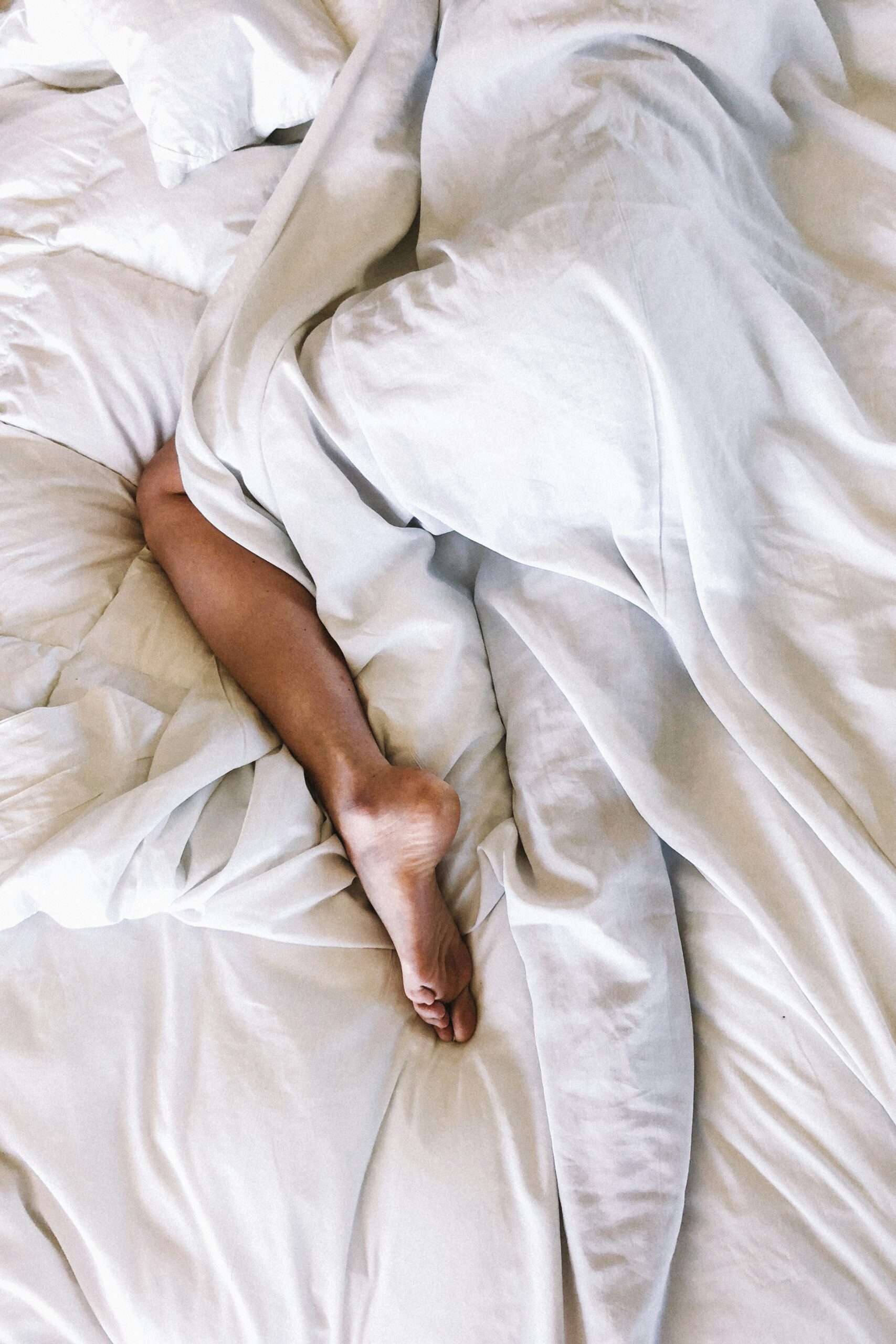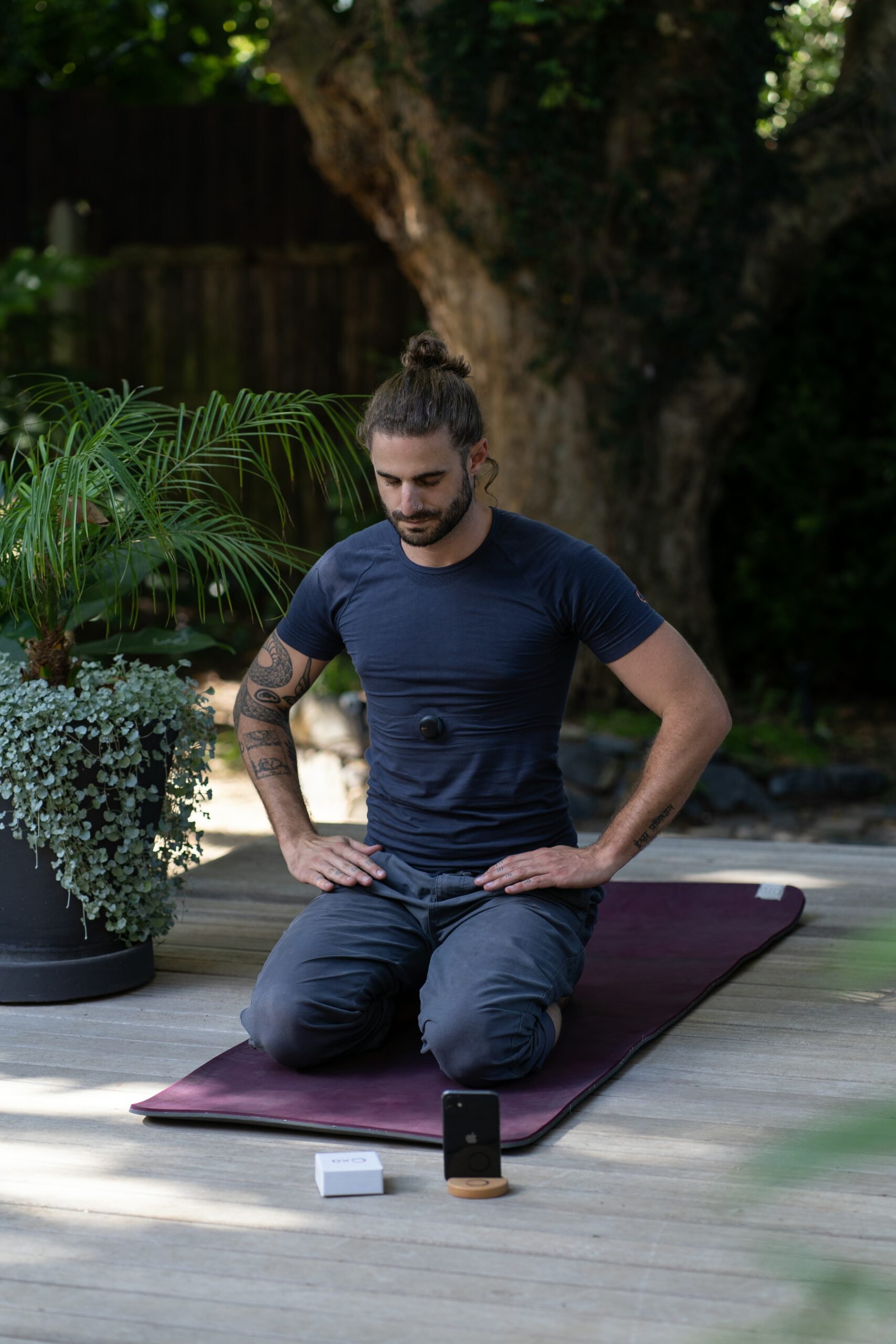

Introduction to Sleep Optimization
Sleep optimization is an essential practice for enhancing overall health and well-being. The concept revolves around making deliberate adjustments to one’s sleep habits and environment to achieve the most restorative and high-quality sleep possible. Proper sleep optimization can lead to significant improvements in physical health, including better immune function, reduced risk of chronic illnesses, and enhanced recovery from daily activities. Moreover, a well-optimized sleep routine is crucial for maintaining mental clarity, emotional stability, and overall cognitive functioning.
The importance of sleep optimization cannot be overstated, as sleep is a fundamental pillar of health. Insufficient or poor-quality sleep can lead to a myriad of health issues such as obesity, cardiovascular diseases, diabetes, and mental health disorders like anxiety and depression. Conversely, optimizing sleep can bolster mental performance, improve mood, and increase the ability to cope with stress, contributing to a more balanced and fulfilling life.
This comprehensive guide aims to provide you with practical tips and strategies to enhance your sleep quality. We will delve into various aspects of sleep optimization, including establishing a consistent sleep schedule, creating a sleep-conducive environment, and understanding the role of diet and exercise in sleep health. Additionally, we will explore how to manage stress and use relaxation techniques to promote better sleep.
By understanding and implementing the principles of sleep optimization, you can take proactive steps toward achieving better rest and overall health. Whether you struggle with sleep disorders or simply wish to improve your nightly rest, this guide will offer valuable insights and actionable advice to help you optimize your sleep and, consequently, enhance your quality of life.
Understanding Sleep Cycles
Sleep is a complex and essential biological process, divided into distinct stages that play a crucial role in maintaining physical and mental health. The sleep cycle is primarily categorized into Rapid Eye Movement (REM) sleep and Non-Rapid Eye Movement (non-REM) sleep, each with its own unique functions and contributions to restorative rest.
Non-REM sleep is further subdivided into three stages. The first stage, known as N1, is a light sleep phase where the body transitions from wakefulness to sleep. During this period, muscle activity decreases, and the brain begins to produce theta waves. The second stage, N2, represents a deeper sleep phase. In this stage, the body’s temperature drops, heart rate slows, and brain wave activity becomes more rhythmic with the presence of sleep spindles and K-complexes, which are thought to play a role in memory consolidation and sensory processing.
The third stage, N3, also known as slow-wave sleep or deep sleep, is the most restorative phase of non-REM sleep. Characterized by the presence of delta waves, this stage is crucial for physical recovery, immune function, and growth. It is during N3 that the body repairs tissues, builds muscle, and strengthens the immune system. Notably, deep sleep is essential for feeling refreshed and energized upon waking.
REM sleep, the final stage of the sleep cycle, is marked by rapid eye movements, increased brain activity, and vivid dreaming. This stage is essential for cognitive functions such as learning, memory, and emotional regulation. During REM sleep, the brain processes and consolidates information from the day, making it critical for maintaining mental sharpness and emotional resilience.
A balanced sleep cycle, which involves progressing through these stages multiple times each night, is vital for optimal health and productivity. Disruptions to the sleep cycle, such as insufficient deep sleep or REM sleep, can lead to impaired cognitive function, mood disturbances, and an increased risk of chronic health conditions. Understanding the importance of each sleep stage can help individuals take steps to optimize their sleep patterns, ultimately leading to improved overall well-being.
The Role of a Consistent Sleep Schedule
Maintaining a regular sleep schedule plays a crucial role in optimizing sleep quality and overall health. Going to bed and waking up at the same time every day helps to regulate your internal clock, also known as the circadian rhythm. This biological process is essential for synchronizing your sleep-wake cycle with the natural environment, ultimately leading to more restorative sleep and improved daily functioning.
Consistency in sleep timing can prevent sleep disorders, enhance cognitive function, and elevate mood. When you adhere to a regular sleep schedule, your body becomes accustomed to a predictable routine, making it easier to fall asleep and wake up naturally. This consistency allows for deeper and more uninterrupted sleep cycles, which are vital for physical and mental recovery.
To establish a consistent sleep schedule, start by determining a bedtime and wake-up time that accommodates your lifestyle and commitments. Aim for 7-9 hours of sleep, as recommended by sleep experts. Once you have identified these times, stick to them diligently, even on weekends. While it might be tempting to stay up late or sleep in during weekends, doing so can disrupt your circadian rhythm, making it harder to maintain consistency.
Creating a bedtime routine can further reinforce your regular sleep schedule. Engage in relaxing activities such as reading, meditating, or taking a warm bath before bed. Avoid stimulants like caffeine and electronic devices, as they can interfere with your ability to fall asleep. Instead, opt for calming environments and practices that signal to your body that it is time to wind down.
Additionally, exposure to natural light during the day and darkness at night can support your internal clock. Spend time outdoors in natural sunlight, especially in the morning, and reduce exposure to artificial light in the evening. Blackout curtains or eye masks can help create a dark sleeping environment, further promoting better sleep quality.
Creating the Ideal Sleep Environment
Crafting the ideal sleep environment is pivotal for achieving restorative rest and optimal health. Key elements such as room temperature, lighting, and noise levels play a significant role in the quality of sleep. Maintaining a cool room temperature between 60 and 67 degrees Fahrenheit is often recommended, as it aligns with the body’s natural drop in temperature during sleep, promoting better rest.
Lighting is another crucial factor. Exposure to natural light during the day helps regulate the body’s circadian rhythm, while minimizing light exposure at night can enhance sleep quality. Invest in blackout curtains to block out external light sources, and consider using dim, warm-toned lights in the evening to signal to your body that it’s time to wind down. Additionally, limit screen time before bed, as the blue light emitted by electronic devices can interfere with the production of melatonin, the sleep hormone.
Noise levels can significantly impact sleep quality as well. Creating a quiet environment is essential, but if complete silence isn’t achievable, white noise machines can be a beneficial alternative. These devices produce a consistent sound that can mask disruptive noises, fostering a more serene atmosphere conducive to sleep.
The comfort of your bedding and mattress is another foundation of a sleep-friendly bedroom. Choose a mattress and pillows that support your sleeping position and ensure that your bedding is soft and breathable. High-quality, comfortable bedding can make a substantial difference in how well you sleep.
A clutter-free and calming space is equally important for promoting relaxation and sleep. Reduce bedroom clutter to minimize stress and create a tranquil environment. Incorporate soothing elements such as calming colors, soft textures, and perhaps a touch of nature with indoor plants. These steps can transform your bedroom into a sanctuary dedicated to rest and rejuvenation.
In summary, by paying attention to room temperature, lighting, noise levels, and the overall ambiance of your bedroom, you can create an ideal sleep environment that enhances your ability to fall asleep and stay asleep, ultimately leading to better rest and health.
Diet and Sleep: Foods and Drinks That Affect Rest
Diet plays a pivotal role in shaping the quality of our sleep. Certain foods and beverages can enhance sleep, while others can disrupt it. Understanding the relationship between diet and sleep is essential for optimizing rest and overall health.
Foods rich in tryptophan, an amino acid that promotes the production of serotonin and melatonin, can significantly improve sleep quality. Examples include turkey, chicken, bananas, and dairy products like milk and yogurt. Tryptophan aids in the relaxation and regulation of sleep cycles, making these foods ideal for evening consumption.
Magnesium, a mineral known for its muscle-relaxing properties, is another important nutrient for sleep. Foods such as leafy green vegetables, nuts, seeds, and whole grains are excellent sources of magnesium. Including these in your diet can help reduce insomnia and enhance overall sleep quality.
Melatonin, the hormone responsible for regulating sleep-wake cycles, can also be found in certain foods. Cherries, especially tart cherries, are a natural source of melatonin. Incorporating cherry juice or fresh cherries into your evening routine can help signal to your body that it’s time to wind down.
On the contrary, certain foods and beverages should be avoided before bedtime to ensure restful sleep. Caffeine, found in coffee, tea, chocolate, and some sodas, is a stimulant that can interfere with the ability to fall and stay asleep. It’s advisable to limit caffeine intake in the afternoon and evening. Similarly, alcohol, despite its initial sedative effects, can disrupt sleep patterns and reduce sleep quality. Heavy meals, especially those high in fat and protein, can cause discomfort and indigestion, making it difficult to fall asleep. Opting for lighter, easily digestible meals is preferable.
Planning evening meals and snacks with sleep in mind involves choosing foods that support relaxation and avoiding those that can hinder it. A balanced dinner with a combination of protein, healthy fats, and complex carbohydrates, followed by a light snack such as a banana or a handful of nuts, can promote a smoother transition into sleep.
By being mindful of dietary choices, one can create an environment conducive to better rest and improved health.
The Impact of Exercise on Sleep Quality
Engaging in regular physical activity is widely recognized as a key contributor to overall health, including improved sleep quality. Exercise can enhance the duration and depth of sleep by promoting the body’s natural circadian rhythms. Physical activity increases the time spent in deep sleep, the most physically restorative sleep phase, which is crucial for muscle repair and growth, as well as overall physical recovery.
Aerobic exercises, such as running, swimming, and cycling, have been shown to be particularly effective in promoting better sleep. These activities help to reduce the time it takes to fall asleep and can also improve sleep duration and quality. Strength training, including weightlifting and resistance exercises, can also contribute positively to sleep by reducing anxiety and stress levels, which are common barriers to restful sleep.
However, the timing of exercise plays a critical role in its impact on sleep. While morning or early afternoon workouts can significantly boost sleep quality, exercising too close to bedtime can have the opposite effect. High-intensity workouts late in the evening can elevate adrenaline levels and body temperature, making it difficult to fall asleep. It is generally recommended to finish vigorous exercise at least three hours before bedtime to allow the body to wind down and prepare for sleep.
To optimize sleep through exercise, aim for a balanced routine that includes both aerobic and strength training activities. Yoga and stretching exercises are also beneficial, particularly when performed in the evening, as they can help relax the mind and body, facilitating a smoother transition into sleep. By incorporating regular physical activity into your daily routine and paying attention to timing, you can significantly enhance your sleep quality and overall well-being.
Mindfulness and Relaxation Techniques for Better Sleep
Incorporating mindfulness and relaxation techniques into your nightly routine can significantly enhance your sleep quality. These practices help calm the mind and prepare your body for rest, making it easier to fall asleep and stay asleep throughout the night. Among the most effective techniques are meditation, deep breathing exercises, and progressive muscle relaxation.
Meditation is a powerful tool for promoting sleep. To begin, find a quiet space where you can sit or lie down comfortably. Close your eyes and focus on your breath, taking slow, deep inhales and exhales. As thoughts arise, acknowledge them without judgment and gently bring your focus back to your breath. Start with five to ten minutes of meditation each night and gradually increase the duration as you become more comfortable with the practice.
Deep breathing exercises can also help in achieving a state of relaxation conducive to sleep. One simple method is the 4-7-8 breathing technique. To perform this exercise, sit or lie down in a comfortable position. Inhale deeply through your nose for a count of four, hold your breath for a count of seven, and then exhale completely through your mouth for a count of eight. Repeat this cycle four times, allowing your body to relax more with each breath.
Progressive muscle relaxation is another effective technique for easing tension and promoting restful sleep. Begin by lying down in a comfortable position. Starting with your toes, tense the muscles in your feet for a few seconds and then release. Move up your body, tensing and relaxing each muscle group, including your calves, thighs, abdomen, chest, arms, and face. This practice helps to release physical tension and promotes a sense of calm.
To maximize the benefits of these mindfulness and relaxation techniques, consider incorporating them into your nightly routine. Consistency is key; practicing these methods regularly can help establish a relaxing pre-sleep ritual that signals to your body that it is time to unwind and prepare for rest. By integrating these practices into your life, you can improve your sleep quality and overall well-being.
The Role of Technology in Sleep Optimization
Technology plays a multifaceted role in sleep optimization, impacting both positively and negatively. One of the primary concerns is the blue light emitted from screens, which can interfere with the body’s natural sleep cycle. Blue light exposure, especially in the evening, suppresses the production of melatonin, a hormone that regulates sleep. As a result, using smartphones, tablets, or computers before bedtime can lead to difficulties falling asleep and reduced sleep quality.
To minimize blue light exposure and promote better sleep, it is advisable to implement several strategies. Firstly, reducing screen time an hour before bed can significantly help. Secondly, utilizing features like night mode on devices or wearing blue light-blocking glasses can mitigate the negative effects. Additionally, creating a bedtime routine that involves non-screen activities, such as reading a book or practicing relaxation exercises, can further enhance sleep quality.
On the positive side, technology offers various tools to monitor and improve sleep patterns. Sleep tracking apps and wearable devices, such as smartwatches and fitness trackers, provide valuable insights into sleep duration, sleep stages, and overall sleep quality. These tools can help identify patterns and disruptions, enabling individuals to make informed adjustments to their sleep habits. Popular sleep tracking apps like Sleep Cycle, Fitbit, and Apple Health offer personalized recommendations to enhance sleep hygiene.
Balancing technology use with healthy sleep habits requires a mindful approach. It’s essential to set boundaries for technology use, especially in the hours leading up to bedtime. Establishing a consistent sleep schedule, maintaining a comfortable sleep environment, and practicing relaxation techniques can complement the benefits of sleep tracking technology. By integrating these practices, individuals can optimize their sleep patterns and achieve better rest and overall health.












